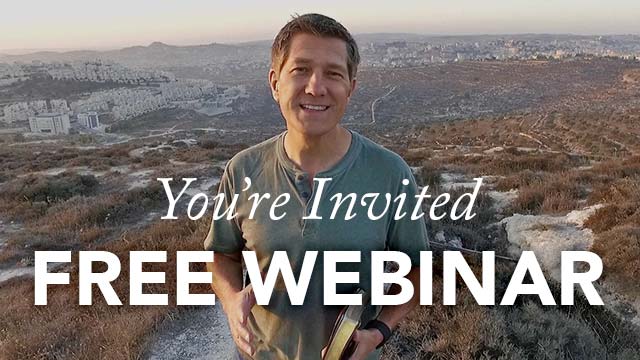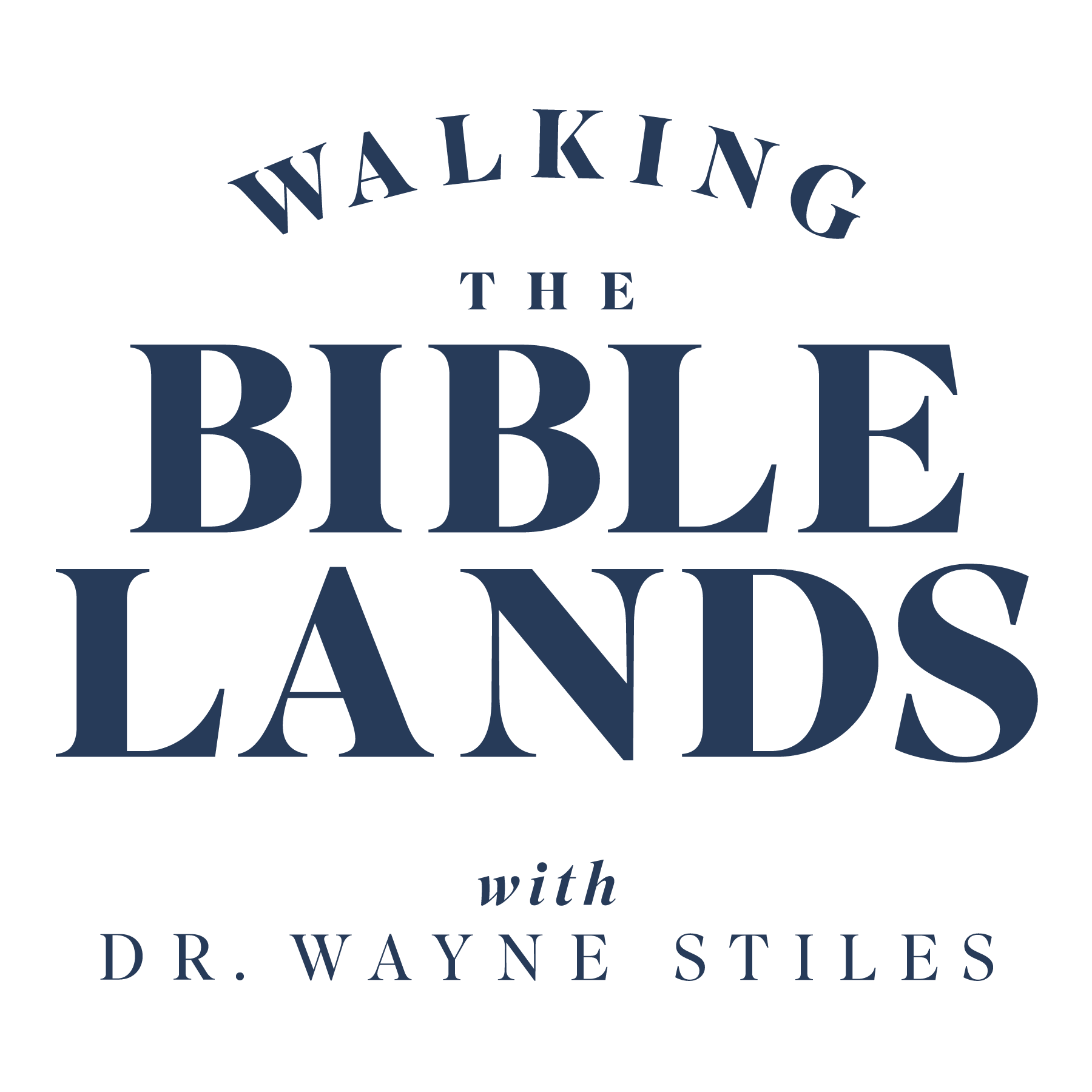3 min read
The Western Wall Tunnel—An Underground Journey to Century-One Jerusalem
Wayne Stiles
:
Aug 13, 2013 11:01:04 PM
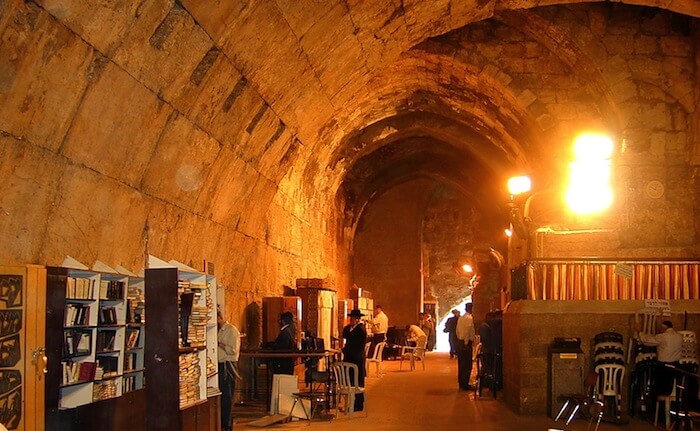
Question: What major site in Jerusalem can a visitor see after the sun goes down that still requires men to wear a hat? (Okay, so you could wear a yarmulke instead of a hat. Most men remove the hat anyway.)
Answer: The Western Wall Tunnel.
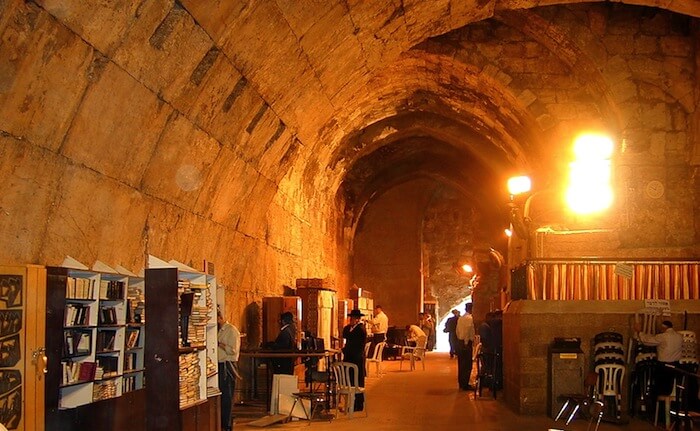
(Photo: Inside the Western Wall Tunnel. Courtesy of the Pictorial Library of Bible Lands)
When you say the words “The Western Wall,” most folks think of the Western Wall plaza:
- It’s the place where bar- and bat-mitzvahs regularly occur and where soldiers are inducted.
- It’s the spot where ultra- and orthodox Jews come to pray—as well as many tourists—and the place of national prayer gatherings.
- It’s Judaism’s most sacred site.
But like the tip of an iceberg, the Western Wall plaza represents only a small part of the whole. There’s much more of the wall to see.
Most of the Western Wall lies buried beneath the rubble of time and hasn’t seen the light of day for centuries.
But a tunnel lets you see the entire length of the wall today.
The Western Wall Tunnel
I passed beneath a sign that read, “Western Wall Heritage,” and stood in a small room before a scale model of the Temple Mount’s original topography. Because the site represents part of the Western Wall, the tour requests all men to cover their heads in respect.
The model explains the stages of building the first two temples on the site.
- Solomon built the original temple, and the Babylonians destroyed it in 586 BC.
- After the Jews’ return from exile, Zerubbabel helped rebuild the temple. Herod the Great greatly expanded it in the first century BC—though the construction continued into the first century—decades after Herod’s death.
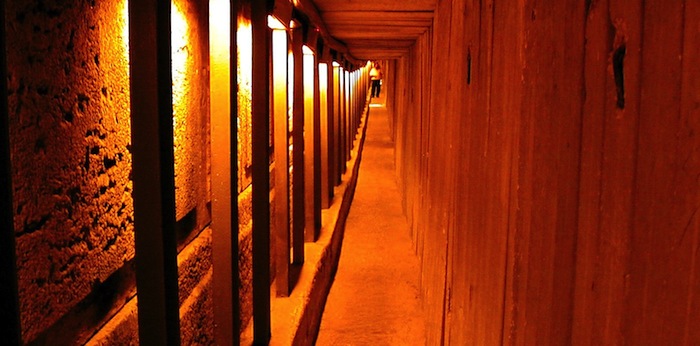
(Photo: Western Wall Tunnel. Courtesy of the Pictorial Library of Bible Lands)
The stones visible in the tunnel tour date from Herod’s time and represent the western section of the massive retaining wall that supported the base of the Second Temple. But these treasures weren’t always visible.
Wilson’s Arch and Warren’s Gate
Nineteenth century scholars struggled to understand the dimensions of the Western Wall. Between 1864 and 1870, British explorers Charles Wilson and Charles Warren discovered the area just north of today’s prayer plaza; an arch and a gate were named after each of them, respectively.
Wilson’s Arch (see first image at top of post) looms twenty-five feet above the ground—though the original height was closer to seventy-five feet. The arch covers a large room where Jewish men can study and pray beside the Western Wall.
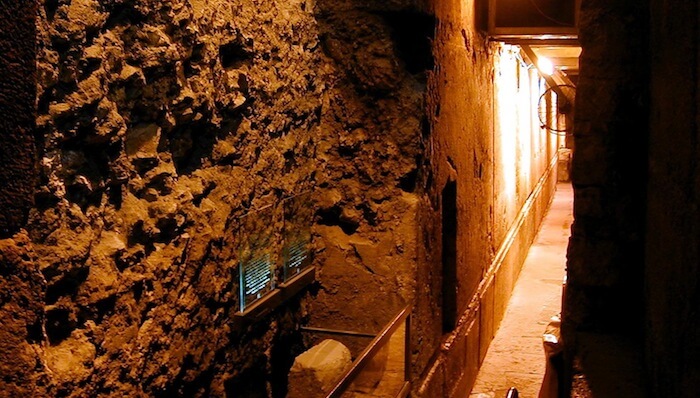
(Photo: Warren’s Gate. Courtesy of the Pictorial Library of Bible Lands)
As our group made its way along the full length of the Wall—a total of 1500 feet—we observed bits of archaeology from the first century. Descending some steps we came to a massive stone that represents part of the “master course” of stones.
- One of these stones measures forty-four feet long, ten feet high, and more than twelve feet deep.
- Weighing in at 570 tons, it remains the largest of its kind in the Middle East.
- Every first-timer’s jaw drops when he or she sees it. Mine still drops.
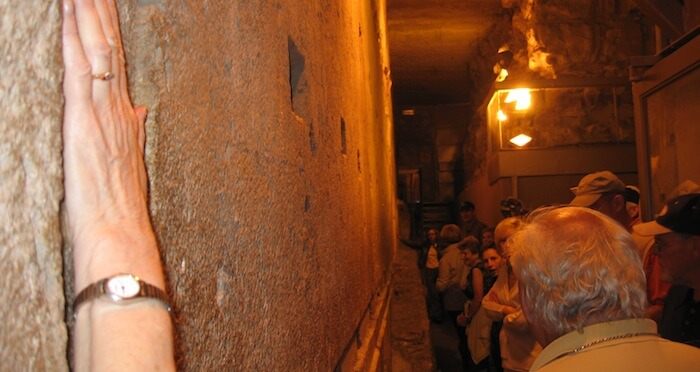
(Photo: the largest stone in Western Wall Tunnel measures from the hand to the person at the far end.)
We watched a brief video presentation that explained how first-century workers maneuvered the massive stones into place through a system of pulleys. Simply a marvel of engineering!
A large scale model of the Temple Mount demonstrates the transitions the hill has seen with the two temples. Hydraulics and dramatic lighting go a long way in making clear what otherwise would stay buried in the rubble.
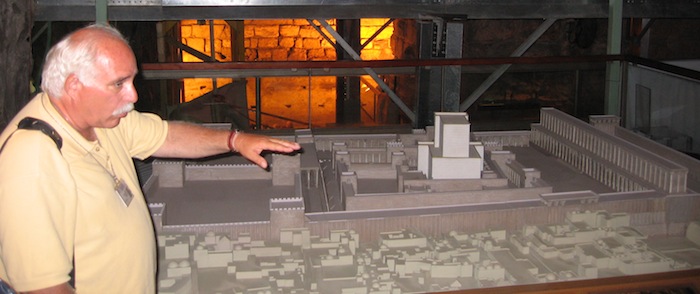
(Photo: Guide Ronnie Cohen explains scale model of Temples)
Holy of Holies Hot Spot
A little further through the Western Wall Tunnel, we stopped at a small alcove with recessed lights. An elderly woman faced the wall and clutched a prayer book, unaffected by our presence.
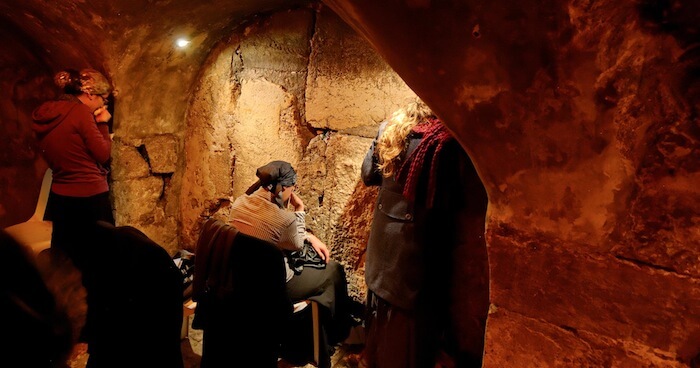
(Photo: Western Wall place closest to Holy of Holies. Courtesy of the Pictorial Library of Bible Lands)
This spot represented, our guide said, the closest we could get to where the original Holy of Holies stood on the Temple Mount. She went on to say that we stood a mere 300 feet from the foundation rock where God created Adam and where Jacob had his dream of a stairway to heaven. Huh?
It always bothers me when any tradition contradicts Scripture.
- After all, the same book of Genesis that informs us that God created Adam and that Jacob dreamed also gives the geography associated with those events. (See one man’s comment in my post about the Temple Mount; he holds this view.)
- And unless Moses got it wrong, neither occurred in Jerusalem. Why would we accept one truth from the Bible without the other?
End of the Western Wall Tunnel
Traveling parallel with the Western Wall, my hands rubbed the stones that bore Herod’s signature relief along its edges. We came to a portion of a first-century street where the signature relief continued in the bedrock of the hill itself. Plexiglas flooring allowed us a peek at the aqueduct that ran underground, with the ceiling of the tunnel now high above us.
The Western Wall Tunnel dead-ends at the Strouthian Pool, beneath the site of the Antonia Fortress. The pool’s name means “lark,” because, like the tiny bird, the pool(s) represented the smallest public pools in Jerusalem at that time.
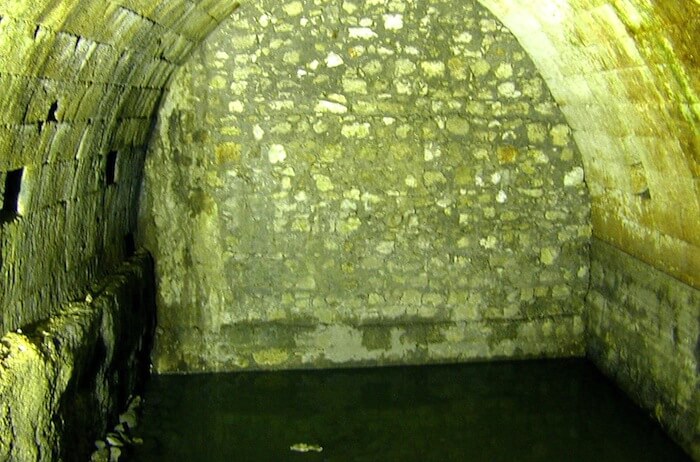
(Photo: Struthion Pool. Courtesy of the Pictorial Library of Bible Lands)
Assuming the political climate allows, visitors can file upstairs and find themselves in the Muslim Quarter. But I prefer to backtrack through the entire Western Wall Tunnel and exit in the plaza. It seems there’s always something I have missed when I walk the tunnel from another perspective.
The popularity of the tour requires reservations. But it’s worth the trouble.
I can’t imagine a better use of time in Jerusalem after the sun goes down.
Tell me what you think: What piece of history would you like to see unearthed? To leave a comment, just click here.
Click here to leave a comment.
-1.png?width=5230&height=1198&name=unnamed%20(4)-1.png)

.jpg?width=350&name=Wayne-books-350wide%20(1).jpg)

